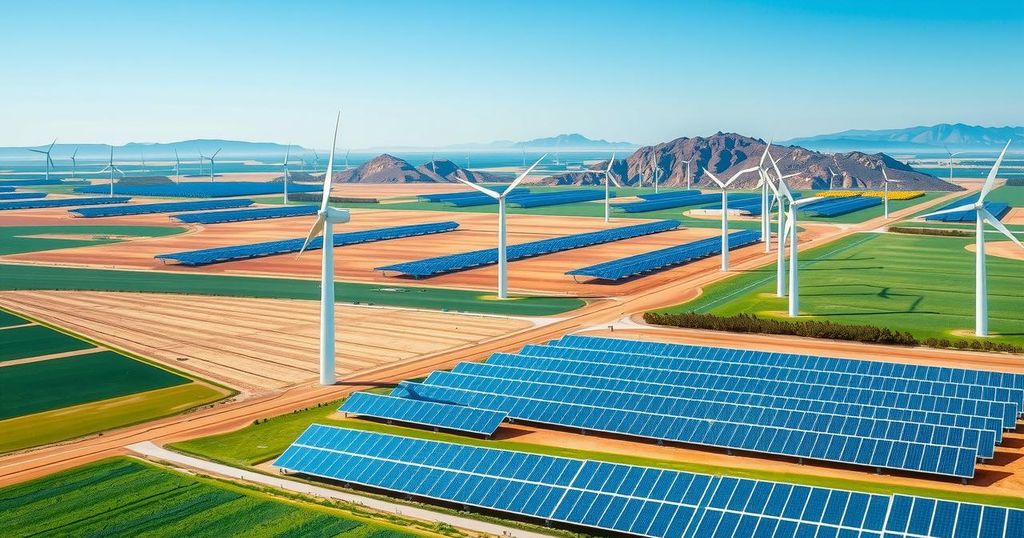Record Renewable Energy Growth Fueled by Solar Power in China

The article discusses the record-high installation of renewable energy, predominantly solar and wind, accounting for 92.5% of new capacity in 2024. China led this growth with nearly 64% of the total, vastly outpacing the U.S. and Europe. Despite significant progress, the current pace is insufficient for meeting the 2030 international climate goals. UN officials emphasize the need for faster transitions and strong commitments to renewable energy for economic benefits.
The global installation of renewable energy reached an unprecedented high last year, with 92.5% of all newly launched electricity coming from renewable sources such as solar and wind, as reported by the International Renewable Energy Agency (IRENA). In 2024, China accounted for nearly 64% of this new renewable capacity, contributing to a total increase of 585 billion watts, signifying a 15.1% rise from 2023. Solar and wind sources now constitute 46% of the world’s electricity supply.
Despite significant growth, the existing pace of development is insufficient to meet the international target of tripling renewable energy capacity by 2030, with forecasts indicating a shortfall of 28%. Established in 2023, this target aims to combat climate change and reduce dependence on fossil fuels like coal and oil. United Nations Secretary-General Antonio Guterres emphasized the need for a swifter and fairer transition to clean energy, recognizing the role of renewable energy in creating jobs and reducing energy costs.
In 2024, China installed approximately 374 billion watts of renewable energy, primarily from solar panels. This marks a substantial lead over the United States and Europe, with China’s total solar capacity at 887 billion watts, contrasted with 176 billion watts in the U.S., 90 billion in Germany, 21 billion in France, and over 17 billion in the U.K.
Simon Stiell, the United Nations’ climate chief, utilized these figures to urge industrialized nations to enhance their climate commitment, particularly referring to the United States’ withdrawal from the Paris climate agreement. He advocated for Europe to embrace the clean energy transition, describing it as an opportunity for economic growth.
Neil Grant, a senior policy analyst at Climate Analytics, suggested that with robust climate policies, the growth rate of renewable energy could outpace current projections. He noted that the $2 trillion market for green energy represents just the beginning of an inevitable global renewables boom.
In summary, the surge in renewable energy installations, driven significantly by China’s solar advancements, highlights the notable progress made in transitioning to sustainable sources of power. However, the current growth levels are inadequate to meet global climate targets, underscoring the necessity for more ambitious policies and commitments from industrialized nations to capitalize on the economic benefits of renewable energy. The future of energy transition hinges on collective action and determined leadership to bolster this rapidly evolving sector.
Original Source: apnews.com






